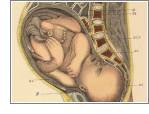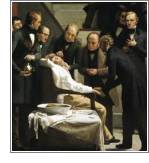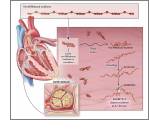Dear Reader,
Our 200th anniversary year has been an exciting one, and we want to thank you for joining us in celebrating two centuries of medical advances. While we've spent some time reflecting on historical milestones, it is our ongoing mission to continue to evolve, always bringing you the best medical information, in the ways that are most useful to you. Here is a sample of some of our latest offerings.
|
 Now with multiple options to view and manage content, the NEJM iPad Edition is a rich issue experience offering the best of print and online, and access is free with an individual NEJM subscription. Recently enhanced functionality includes the ability to highlight article text and export article PDFs and PowerPoint slide sets. And, images are now optimized for Retina display. A recent review from iMedicalApps states, "The New England Journal of Medicine continues to be the standard bearer in mobile."
The NEJM iPad Edition is your day-to-day resource for trusted content. Have you taken a look at it lately?
|
 The latest Video in Clinical Medicine discusses the principles of capnography and how to interpret the information it provides. Capnography, the graphic display of the exhaled and inhaled carbon dioxide concentration plotted against time, is for monitoring ventilation. Other recent videos include neonatal circumcision and ultrasound-guided peripheral IV placement.
Videos in Clinical Medicine allow you to watch common clinical procedures on your computer or handheld device. Peer-reviewed for accuracy and chaptered for easy reference, these videos provide a concise review of a procedure, including preparation, equipment, and more. View the list of Videos in Clinical Medicine. |
 No specialty demonstrates better than obstetrics the tremendous progress that has been made in medicine in the past 200 years. In the final review in our year-long anniversary series, Massachusetts General Hospital's Dr. Michael Greene describes the progress in the understanding, diagnosis and management of pregnancy during the last two centuries. Read the article now.
Last month, Dr. Kenneth Polonsky from the University of Chicago looked back to 1812 when severe insulin deficiency dominated the clinical presentation of diabetes. While scientific advances have led to effective disease prevention strategies, the pathway to cure diabetes has remained elusive for this now worldwide epidemic. Read the review on diabetes, or see previous reviews on tuberculosis, health law, neurology and psychiatry, cancer research, surgery, pediatrics, asthma, infectious disease, and coronary artery disease. |
 Throughout the 200th anniversary year we have asked for your votes, and you have responded with a resounding favorite. Since the 1846 report from Boston surgeon Henry Jacob Bigelow, " Insensibility during Surgical Operations Produced by Inhalation," so many of the significant advances we've seen rely on the use of anesthesia. It is difficult to imagine medicine today without it. If you haven't read the original report yet, it's worth taking a few minutes to travel back to the mid-nineteenth century, when Bigelow wrote, "It has long been an important problem in medical science to devise some method of mitigating the pain of surgical operations." The beginning of ether anesthesia won the final round of voting against many other significant developments published in NEJM over the last two centuries: the first description of platelets, the beginning of bone marrow transplantation, studies on an attenuated measles vaccine, the first oral ACE inhibitor, the knowledge that aspirin prevents heart attacks, the first treatment of stroke, or understanding how to prevent type II diabetes. Explore the historical timeline for more milestones.
|
 There's a new page on NEJM.org, Medicine and Society, which explores medicine's larger contexts in the world. You'll find content that appeals to a broad area of interests, including global health, government, medical ethics, history, and education. Each week we'll feature new Perspective articles, audio interviews, video roundtable discussions, interactive features, and more.
This week on Medicine and Society you'll find new Perspective articles about graphic warnings on cigarette packs, choice and uncertainty in the ICU, and a personal essay about a physician's self-reflection. Bookmark the page and check back regularly for content of interest to you. |
 Our established Clinical Implications of Basic Research series has focused on highlighting laboratory research that could lead to advances in clinical therapeutics. However, the path between the laboratory and the bedside runs both ways: clinical observations often pose new questions for laboratory investigations that then lead back to the clinic. To address these advances, we are launching a new spin-off series this week, Basic Implications of Clinical Research.
The first article in this series looks back to 1958, when an astute clinician found an association between aortic stenosis and gastrointestinal bleeding. This led to the identification of the mechanism of the bleeding: fragmentation of high molecular weight multimers of von Willebrand factor on the stenotic valve led to an acquired von Willebrand disease.
|
We hope you found something of interest. As always, we welcome your feedback.
Sincerely,
Christopher R. Lynch
Vice President for Publishing
|
|
|
|






